Introduction
Work is defined as the quantity of energy used to move an object. An object is said to have performed Work if it experiences modifications in velocity or displacement. The dependent variable of interest will be the cart’s kinetic energy or the energy involved in its travel. Generally, this report aims to construct mathematical and graphic models for the system using experimental data for accelerating carts.
Methods
A force supplied to a cart by a rope connected to a hanging load causes it to move more quickly along a track. Essentially, the model shows the connections between independent variables and kinetic energy. Consequently, the KE is the dependable variable, and the displacements or distance and velocity are the independent variables. There are concerns about numerous elements, such as air resistance, that may affect the cart’s mobility. Wheel friction is another factor that could have an impact on the movement. Air resistance is the only one of these uncontrollable parameters since it is difficult to measure. The air pushes back on the cart as it goes through, slowing it down, a relationship termed action and reaction.
Results or Data
The result of the experiment is displayed in Figure 1 below.
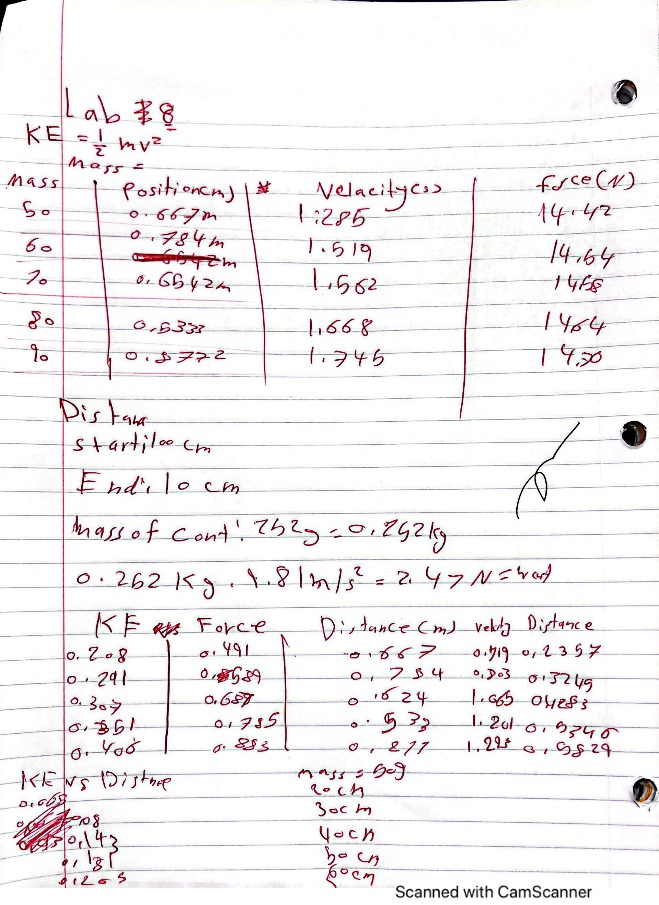
Note: This data was produced after subjecting a cart to a force and kinetic energy associated with its motion observed
Analysis
Relationship Between Kinetic Energy and Force
Changes in the energy supplied to the cart impact its kinetic energy. Kinetic energy, K, is calculated by K or KE= 1/2mv2. According to the work theorem, an object’s change in kinetic energy, or KE= KE2-KE1, equals the net force’s Work on the object (“Work-energy theorem review,” n.d.). As a result, the work-energy theorem can be proven by calculating the Work done on a glider and the change in its kinetic energy using a frictionless air track system. Generally, an increase in force should lead to a rise in kinetic energy since the higher the force, the greater the change in motion. The expected graph is supposed to be as illustrated in Figure 2 below. The y-intercept for this is presumed to be zero since it passes through the (0,0) coordinates.
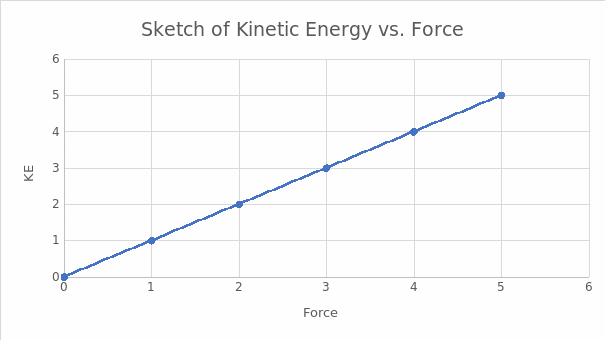
Experimental Results of Kinetic Energy vs. Force
The experimental graph for the kinetic force vs. force is shown in Figure 3 below.
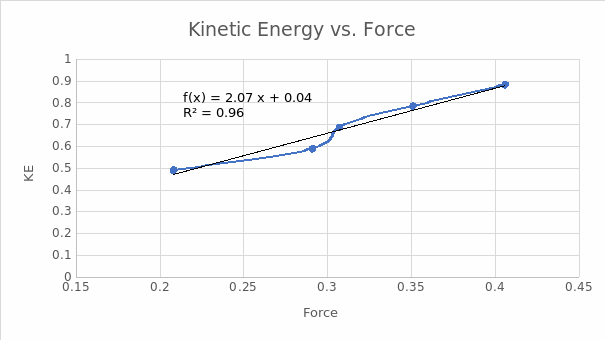
Relationship Between Kinetic Energy and Distance
Displacement or distance also impacts the KE, just like force. According to the work-energy theorem, the network applied to a system equals the system’s change in energy. A system accelerates and displaces as a result of a net force. The kinetic energy is proportional to the displacement because the net Work done on the system is the net force multiplied by the displacement. Therefore, when the distance rises, the KE will also increase when the force is constant.
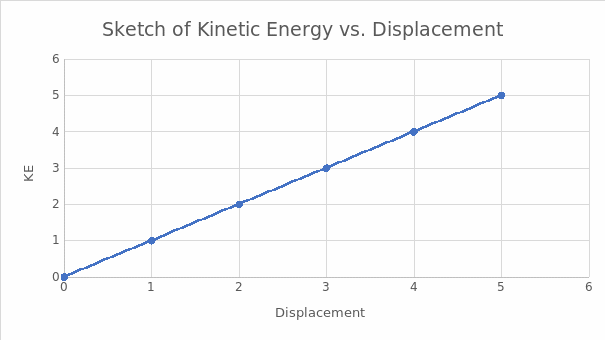
Experimental Results of Kinetic Energy vs. Displacement
The experimental graph for the kinetic force vs. force is shown in Figure 5 below.
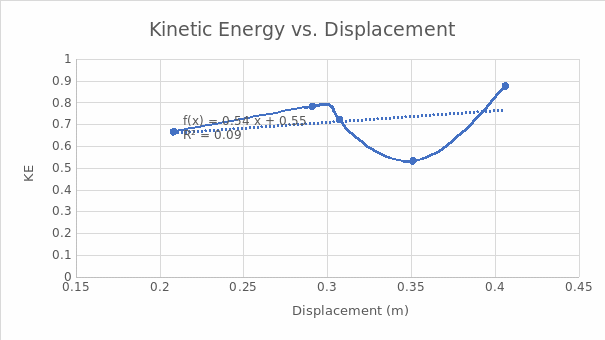
When comparing the slopes of each graph to its counterpart, it is clear from the graphs that the facts do not support this theorem. In essence, it is clear that the slopes are not equal, and as a result, our findings do not support the theorem. A proportional relationship’s graph crosses the origin, and its equation is written as y=mx+b, where m denotes the slope and b, the zero-valued y-intercept.
Conclusion
In brief, this lab examined the Work and kinetic energy in a horizontal system. Through this experiment, it was vital to comprehend how an object’s energy is affected by the overall Work performed or applied. The lab generated a new query regarding the impact of friction on the object’s net force, Work, and energy. By doing more accurate measurements and calculations, the experiment can be enhanced. Generally, it is fascinating to observe how altering the force being applied to a system impacts the kinetic energy of the moving object within the system.
Reference
Work-energy theorem review. (n.d.). Khan Academy. Web.